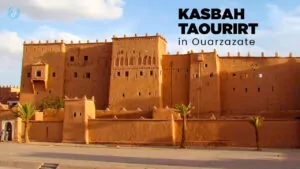Are you tired of the same old vacation spots? Ready to explore something wild and exciting? Mexico is a treasure chest brimming with fascinating wildlife waiting for you to discover. What animals live in Mexico?
From the dry deserts to the lush jungles, this country is home to an incredible array of creatures that can’t be found anywhere else.
Did you know Mexico ranks as one of the top countries in the world for its biological diversity? That’s right! It’s a haven for animal lovers and adventurers alike. This blog will take you on a journey through the diverse habitats of Mexico, introducing you to some of its most iconic inhabitants—think jaguars, monarch butterflies, and even the unique axolotl.
Get ready to learn about where these animals live and how they survive in their natural environments. Excited yet? Keep reading!
Mexico’s Biodiversity
Mexico is comparable to a colossal animal party, teeming with species that you have likely never encountered before. It’s got everything from tiny frogs to big cats, making it a top spot if you’re into nature and cool creatures.
Overview of Mexico’s rich animal species
Mexico is full of exciting animals. With 449 tracked species, this place is a paradise for animal lovers. Here, you’ll find everything from tiny insects to huge mammals roaming around.
Read More: Best Beaches in Cancun
The habitats are just as varied—think deserts, forests, mountains, and even wetlands. This mix makes Mexico a unique spot on the planet for wildlife.
Take the Monarch Butterfly Biosphere Reserve in Michoacán State, for example. It’s not only a UNESCO World Heritage Site but also a prime spot for birds and bugs flying south from colder places.
And let’s not forget about the sea creatures! The Sea of Cortez offers whale-watching that can make your trip unforgettable. Whether it’s dry lands or deep waters, Mexico’s animals keep things lively around here.
Mammals in Mexico
Mexico is a playground for all kinds of furry friends, from tiny raccoons to big cats like jaguars. Want to find out who else calls this place home? Keep reading!
An overview of common mammals
Mexico teems with a variety of common mammals that roam its vast landscapes. From the majestic pumas and jaguars that rule the top of the food chain to playful spider monkeys swinging through trees,.
The dry deserts see coyotes and jackrabbits making their homes, while mountainous regions shelter elusive ocelots and robust antelopes. Even more fascinating are those unique to Mexico, like the Mexican gray wolf and vaquita porpoise, each telling its own tale of survival.
“Every creature is a masterpiece, painted by nature’s own hand.”
Environments vary wildly across Mexico, from coastal areas where gray whales migrate to dense forests home to wandering tapirs. Let’s not forget about those smaller yet vital players: burrowing armadillos and fleet-footed prairie dogs dotting terrain with life.
Each mammal plays a crucial role in maintaining ecological balance, making Mexico’s tapestry of life richer with every thread.
Specific mammals and their habitats
So, we talked about the common mammals in Mexico. Now, let’s get up close with some of them and where they live. The jaguar roams the dense forests of southern Mexico and loves to swim in rivers.
These big cats are mighty and stealthy hunters in their lush green homes.
Sloths hang out in the rainforests, moving as slowly as molasses among the trees. They love their leafy meals and cozy tree branches. In dry deserts and rocky lands, you’ll find armadillos scuttling around for food at night to avoid the heat.
Each mammal has its own special spot in Mexico’s rich tapestry of life, from wet marshes to high mountains.
Birds in Mexico
Birds in Mexico are a colorful bunch, with some like the quetzal and military macaw flying around. You’ll want to grab your camera for these guys!
Overview of common birds
Mexico is a place where you can see many kinds of birds. The Mexican eagle flies high in the sky and is known for staying with its partner all their lives. Imagine seeing hummingbirds zoom by, flapping their wings super fast—up to 80 times every second! You might also spot house finches that can turn redder depending on what they eat.
Plus, northern cardinals light up the scene with their bright red feathers, making every bird watcher’s day.
Mexico is a paradise for those who love to watch birds dance in the sky.”
In this land full of feathered friends, each bird tells its own story. From the rapid wingbeats of hummingbirds to the lifelong bonds of Mexican eagles and the diet-influenced colors of house finches,.
These common birds add so much beauty and wonder to Mexico’s skies.
Specific birds and their habitats
On the Yucatan Peninsula, pink flamingos and Yucatan parrots brighten up the skies. These birds love places with lots of water, like wetlands and mangroves. They find food and spots to rest in these lush areas.
Read Also: How Far is Playa del Carmen from Cancun?
Think of them as nature’s own splash of paint across Mexico’s landscapes.
Wetlands are not just about water; they’re bird havens too. From ducks to wading birds. Shorebirds dash along coastlines here, making it a busy world of wings and water.
Each bird adds its unique note to the chorus of Mexican wildlife sounds, proving life thrives where land meets water.
Reptiles in Mexico
In Mexico, you’ll find all sorts of cool reptiles, like big lizards and sneaky snakes. These creatures hang out in many places, from hot deserts to thick jungles. Want to know more about them? Keep reading!
An overview of common reptiles
Mexico is a place with a lot of reptiles. More than 700 varieties live here. Mexico is the exclusive home of many of these reptiles. They help keep nature in balance. You’ll find different types all over the country, from deserts to forests.
Some common ones include various snakes like the western diamondback and mojave rattlesnake, as well as lizards such as horned lizards. These creatures adapt to many places—dry lands, mountains, and even cities! Reptiles play big roles in their homes by controlling pests and being food for other animals.
“Reptiles: small scale but a big deal in maintaining nature’s balance.”
Specific reptiles and their habitats
In the lush rainforests, you might meet the famous Morelet’s crocodile. These big reptiles love swamps and lakes where trees grow right out of the water. They are masters of hide-and-seek, blending in with their green surroundings.
Not too far off, in arid deserts, lives the eastern diamondback snake. This tough snake can handle hot sands and scarce water like a champ.
Head over to the Gulf of California if marine life calls your name. Here, olive ridley sea turtles surf waves and lay eggs on sandy beaches under moonlight. Each of these creatures has found its perfect spot in Mexico’s vast outdoor playground.
The country’s different landscapes, from cool mountains to warm seasides, make it just right for all sorts of cold-blooded adventurers.
Amphibians in Mexico
In Mexico, you’ll find frogs that can live both on land and in water; they’re part of an amazing group of animals called amphibians. These critters are super cool because they go through a complete change as they grow up, starting from being tadpoles in the water to hopping on land as adults.
For anyone who loves animals, seeing all the different kinds of these creatures in Mexico is like finding hidden treasure. Keep reading so you can meet some of them!
An overview of common amphibians
Mexico is home to more than 380 types of amphibians. This includes many frogs, toads, and creatures like the Mexican walking fish, also known as axolotls. These animals love Mexico’s wet places.
Some live high in mountains, while others enjoy the forests or waters near beaches.
“Frogs make music wherever they go.”
Many scientists spend time studying these amazing animals. They want to make sure we don’t lose them and their homes. Sadly, some are very hard to find now because their living spaces are disappearing.
But efforts are going on every day to help protect them and keep Mexico’s nature full of life.
Specific amphibians and their habitats
So, we’ve talked about the common types of amphibians you might run into in Mexico. Now, let’s get up close with a few special ones and where they call home. The axolotl is a cool creature living in the wetlands near Mexico City.
These little guys are kind of famous for staying young their whole lives. Yeah, they never grow up fully! Then there’s the Mexican burrowing frog, which loves digging down into the ground to stay cozy and safe.
The Mexican tree frog? You’ll find them hanging out in trees (no surprises there), enjoying life off the ground. And don’t forget about the Mexican salamander and spadefoot toad, each picking different spots across Mexico that suit them best.
Salamanders often stick to moist places like forests or mountainsides, while spadefoot toads dig themselves comfy burrows in drier areas. Each spot gives these incredible amphibians what they need to thrive, from food to shelter.
Insects and spiders in Mexico
Mexico is home to a crazy mix of bugs and creepy-crawlies. Think butterflies, bees, and some big spiders! They all find their perfect spot in Mexico’s wild places. Want to get up close with these tiny critters? Keep reading for the buzz in their world!
Overview of common insects and spiders
Mexico is rich in tiny creatures like insects and spiders. These small animals vary widely, from the busy ants you might see marching one by one to the graceful butterflies flitting among flowers.
Don’t forget about spiders—those eight-legged mysteries that spin silk into homes or traps. They’re all part of Mexico’s wildlife tapestry.
“Every critter, no matter how small, plays a huge role in nature’s big picture.”
In this country, you’ll find species that range from common backyard visitors like bees and beetles to more unique ones like the tarantula and black widow spider. Each has its place, whether pollinating plants or keeping pest populations under control.
Keep your eyes peeled; you might just spot some of these fascinating inhabitants during your travels!
The habitats of specific insects and spiders are described
After talking about many insects and spiders in Mexico, let’s narrow down to some special ones and where they live. The Mexican fireleg tarantula, with its striking reddish-orange legs, calls the wild areas of Mexico home.
These big spiders love dry scrublands and forests where they can dig burrows or find shelter under rocks.
Scorpions are another group that thrives in Mexico’s varied habitats. With 2,000 kinds around, these creatures make their homes everywhere, from deserts to rainforests. They’re masters at adapting but they prefer places where they can hide during the day and hunt at night.
So next time you’re wandering through Mexico’s natural beauty spots—be it a desert or a dense forest—keep an eye out for these fascinating inhabitants who call this place home.
The official national animal of Mexico
The official national animal of Mexico is the golden eagle. This bird symbolizes strength and freedom. Want to learn more? Keep reading!
An explanation of the national animal’s significance is provided
Mexico chose the Golden Eagle as its national symbol. This bird stands for strength, bravery, and liberty in Mexican culture. People see it on the country’s flag too. The image shows an eagle eating a snake on top of a cactus plant.
This scene is more than just a picture; it narrates the history of Mexico City’s founding. Legends say that ancient people saw this eagle when they were looking for a sign to start their city.
This powerful bird also connects to important stories and beliefs from Mexico’s past, including those of ancient folks like the Aztec people. For them, the Golden Eagle was sacred—kind of like a superhero from old tales that helped shape what Mexico is today.
Its place on the flag isn’t just for show; it reminds everyone of courage and freedom every day.
Top Wild Animals in Mexico
Mexico is full of amazing animals. Get ready to meet some wild creatures that call this place home.
A list and brief description of notable wild animals
Some of the most eye-catching creatures in Mexico have to be the big cats and slithery snakes. Picture the jaguar, silent but deadly, roaming through dense jungles looking for its next meal.
Then there’s the cougar, not far behind, with a roar that can make your hair stand on end—truly kings of their territory. And let’s not forget about our slippery friends: rattlesnakes shake their tails as a warning before striking fast.
But for those who like living on the edge, encountering a fer-de-lance or yellow-bellied sea snake will definitely get your adrenaline pumping.
Of course, it’s not all about those at ground level. Soaring high above are some real beauties, like box jellyfish floating gracefully in marine ecosystems off places like Cancun and coral reefs teeming with life in areas such as the Yucatan Peninsula.
The golden eagle is another stunner; it’s actually Mexico’s national animal because of its strength and majesty. Visiting Michoacán might also treat you to the sight of magnificent monarch butterflies turning skies into moving canvases during migration seasons.
Each creature adds unique colors and thrills to Mexico’s vast wildlife tapestry, making every encounter an unforgettable adventure.
Most Dangerous Animals in Mexico
So, you think Mexico is all sunny beaches and tasty tacos? Well, it’s also home to some really tough critters. Imagine wandering into the wild and bumping into a creature that doesn’t want to be friends—yikes! These creatures are not just impressive; they’re also a bit scary.
A list and a brief description of dangerous animals are provided
Mexico has some animals that you really wouldn’t want to bump into on a walk. Take the rattlesnake, for instance. This snake makes a noise with its tail to warn you. But if you get too close, it can strike and inject venom, which is very dangerous.
Then there’s the fer-de-lance snake—another one to avoid. It’s super sneaky and has a bite that can cause serious harm.
We also have big cats, like jaguars and cougars, roaming around. Jaguars are powerful hunters that love the water, while cougars prefer mountains and forests but they both will stand their ground if threatened.
And don’t forget about the box jellyfish in Mexico’s waters; it might look pretty but its sting is incredibly painful.
Then there are those yellow-bellied sea snakes floating in Mexican seas—they’re not friends either! Their venom can make you very sick. So, always keep an eye out and respect their space!
Endangered animals in Mexico
Mexico is home to some animals that don’t have many friends left in the wild. These rare critters are fighting for their future, and it’s a big deal to keep them around. People are working hard to save these special animals from disappearing forever.
Want to know more about these creatures? Stick with us!
A list and brief description of endangered animals
Some animals in Mexico are having a tough time and might not be around for much longer. Take the axolotl, a unique type of salamander that lives only in the waterways near Mexico City.
It’s famous for its ability to heal itself and even regrow parts of its body! Then there’s the vaquita porpoise, which is the most endangered marine mammal in the world right now. You can find it only in the northern part of the Gulf of California.
The Mexican wolf, once roaming large areas freely, is now struggling to survive due to habitat loss and other challenges. Thirdly, we have another primate feeling pressure: the Mexican howler monkey, known for their loud calls that echo through forests.
These animals need help from people all over to make sure they stick around for future generations. There are initiatives underway, such as protected areas and breeding programs, to give these rare creatures a fighting chance against extinction due to human activity and changing environments.
Trying hard means some day we might see their numbers go up instead of down!
Efforts to protect these species
Mexico is doing a lot to help its endangered animals. People have initiated programs aimed at returning animals to their natural habitats and monitoring them to ensure their safety. They look out for the health of the forests, rivers, and oceans that these creatures call home.
Protecting places like Basaseachic Falls National Park helps not just one animal but many.
Teams work hard to stop things that hurt wildlife, like cutting down too many trees or fishing too much in the ocean. They teach people how living things connect and why each one matters.
By sharing what they know, these heroes make sure everyone understands how important it is to take care of nature, from big mountains and deep seas to tiny frogs and huge whales.
FAQs about Animals in Mexico
People often ask about what kinds of creatures find their homes in Mexico. From the deserts to the Caribbean coast, this country is a place where many different animals live. They wonder if there are any unique species they wouldn’t see anywhere else and yes, Mexico has them! Creatures like the axolotl that can regrow parts of its body or the spider monkeys with long tails for climbing trees are just a couple of examples.
Another question that pops up is about animals facing danger. Sadly, some species in Mexico need help because their numbers are getting very low. The sea turtles and Mexican prairie dogs are fighting to survive because their homes are disappearing, or they face other threats.
People want to know how they can help protect these animals and ensure they’re around for future generations to enjoy.
Conclusion
So, we’ve journeyed through the lush landscapes of Mexico and met a cast of animals that many books could only dream about. From playful mammals to colorful birds, sneaky reptiles, and even those tiny creatures we often overlook—insects and spiders—.
Mexico’s diversity is like a treasure chest; open it, and you’ll find wonders inside.
Let’s not forget the guardians of this kingdom: the vaquita porpoise waving its goodbyes in the sea or the majestic jaguar prowling through montane forests. These animals don’t just live in Mexico; they make it alive.
Sadly, some are singing their last songs; think of the critically endangered ones fighting for survival. It shows us how precious these living jewels are. We’re part of their story too; by understanding them better, maybe we can help write a happier chapter ahead.
Remember, folks, next time you’re wandering around, keep your eyes wide open—nature has an epic story to tell!





























